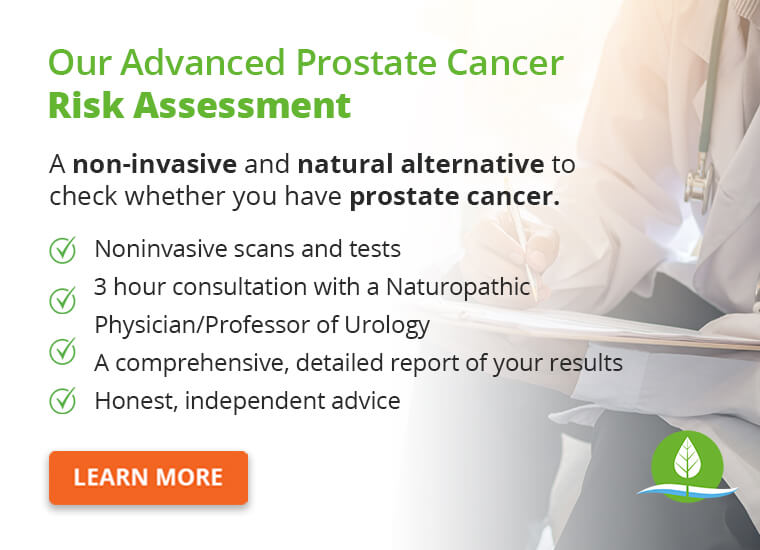A prostate cancer diagnosis can be emotionally challenging, often causing feelings of anxiety and uncertainty about the future.
While some men may consider prostate drugs and surgery as treatment options, recent research has indicated the importance of evaluating treatment choices carefully for prostate cancer.
A study published in the Journal of Urology evaluated the emotional distress of patients soon after diagnosis and after a treatment decision.
It found that men who felt more anxious about their diagnosis were more likely to choose surgery over active surveillance. This was despite many patients being diagnosed with low-risk prostate cancer.
While some men may consider prostate drugs and surgery as treatment options, recent research has indicated the importance of evaluating treatment choices carefully for prostate cancer. For those suffering from low-risk, localized prostate cancer, active surveillance could be of great benefit.
Get Your FREE PSA Lowering Diet Plan!
- Naturally lower PSA levels
- Reduce nighttime trips to the bathroom
- Enjoy better bladder control and urine flow
What Is Active Surveillance?
Active surveillance is a means of monitoring prostate cancer when it hasn’t yet spread outside of the prostate.
It is suitable for men with low-risk prostate cancer, which has a low risk of spreading (localized prostate cancer).
Active surveillance includes grade group 1 or Gleason 6, a PSA level <10, cancer that is confined to the prostate.
While doctors often prioritize early treatment for health issues, it’s important to be aware that alpha-blocker drugs, surgery, and radiation may have side effects affecting a person’s quality of life
It’s worth noting that a biopsy, like any medical procedure, carries some risks. These risks include infection, but it’s essential to discuss these potential complications with your healthcare provider.
Tests
For many men, the idea of not treating a problem straight away might seem strange.
However, while active surveillance does not require treatment, it does involve constant supervision by your Doctor, and it is a structured program that will involve both PSA tests and check-ups.
Once you have discussed starting active surveillance with your doctor, you will be reviewed in a clinic at three months.
PSA Test
PSA Testing is a blood test that measures the amount of prostate-specific antigen (PSA) in your blood. PSA is a protein produced by normal cells in the prostate and also by prostate cancer cells.
As men age, their PSA naturally increases, and a high PSA is not always indicative of prostate cancer. This test will be done every three months for two years, then every six months from then on.
DRE
The Doctor might recommend a DRE (digital rectal exam) to check your prostate further. In this procedure, the doctor or nurse feels your prostate through the wall of the rectum by sliding a finger gently into your anus.
This is done to feel for any hard or lumpy areas in your prostate, and to get an idea of its size.
MRI Magnetic resonance imaging
An MRI scan creates a detailed image of your prostate and the surrounding tissues. This allows the doctor to check whether there are cancer and disease progression.
Biopsy
During this process, your doctor may suggest a prostate biopsy. This will usually be done when PSA test results are higher than normal or if your doctor detects a prostate problem during your DRE.
It should be noted that a biopsy can have several risks and life-changing side effects. This includes infection and even the spreading of prostate cancer cells.

Advantages
Since no aggressive treatment is involved, you are less likely to experience severe side effects that could significantly affect your quality of life. It will not affect your everyday life as much as surgery or radiation therapy.
Disadvantages
Some men may feel anxious at the thought of not having treatment. Your cancer might grow more quickly than expected and become harder to treat – but this is very uncommon.
It’s important to be aware that additional biopsies may be necessary, and your healthcare provider can explain the associated risks and potential discomfort.
Active Surveillance vs. Watchful Waiting
When searching for information about active surveillance, you may have come across the term watchful waiting.
The two are very different and should not be confused with one another. Although both are used as a way to avoid unnecessary treatment, they have their differences.
Active Surveillance
Active surveillance monitors prostate cancer more closely, involving a range of periodic tests. It is generally recommended for men with low-risk prostate cancer and never for those diagnosed with high-risk cancer. If your results change, your doctor will then proceed to discuss treatment options.
Watchful Waiting
Watchful waiting is usually used by men experiencing other health problems, who may be unable to handle surgery or radiotherapy. It can be used in men with both low-risk cancer or men whose cancer has spread (advanced cancer).
It involves fewer tests than active surveillance and is less intensive. More often than it takes place at the GP surgery instead of a hospital. If you do have treatment in the future, it will aim to control cancer and manage any symptoms, rather than to cure it.
Conclusion
Being diagnosed with prostate cancer can leave you feeling vulnerable. However, by taking the right steps and being aware of treatment options, it can be treated.
While prostate cancer active surveillance may be considered for some cases of low-risk prostate cancer, it’s essential to discuss your specific situation with your healthcare provider to determine the best course of action. Before undergoing prostate cancer treatment, do your homework and discuss your options with your Doctor.







